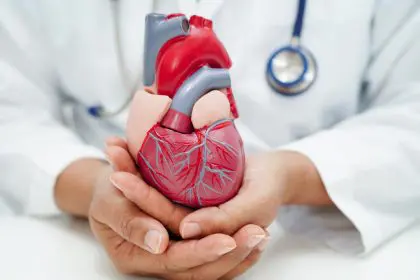The battle against heart disease has found a new ally – the micro-workout. Recent research reveals that even minimal bursts of vigorous activity can significantly impact cardiovascular health, offering hope to millions who struggle with traditional exercise routines. These findings challenge conventional wisdom about exercise and provide an accessible solution for individuals who may not have the time or resources for long, structured workouts.
For decades, health experts have recommended 30 minutes or more of daily moderate exercise, but this latest research suggests we may need far less time than previously thought to achieve remarkable heart health benefits.
The science behind the discovery
Recent studies have transformed our understanding of exercise’s effect on heart health. A study published in the British Journal of Sports Medicine analyzed the activity levels of 103,000 adults, with an average age of 61 years. The research used precise tracking to examine the effects of short bursts of intense activity, such as rapid walking or stair climbing. The study then measured cardiovascular outcomes, revealing that these brief yet vigorous efforts were enough to improve heart health significantly.
The findings underscore how brief, intense physical activity can reduce the risk of heart disease, even in individuals who may not engage in regular, sustained exercise. This insight into cardiovascular health, particularly for middle-aged and older adults, could potentially reshape how health professionals approach heart disease prevention.
What is VILPA?
One of the key concepts that emerged from this research is vigorous intermittent lifestyle physical activity (VILPA). VILPA refers to brief, intense bursts of physical activity that can be seamlessly integrated into daily routines without requiring special equipment or significant time commitment. This makes it an accessible option for most adults, especially those with busy schedules who may struggle with traditional exercise programs.
Unlike regular workouts, which might demand at least 30 minutes of continuous effort, VILPA is focused on short, intense moments of exertion that last for just a few minutes. Despite the short duration, the benefits are measurable and substantial, making this approach particularly appealing for people who feel they do not have the time or inclination for longer exercise sessions.
The numbers that matter
The research underscores the significant health benefits of VILPA. Key findings demonstrate the impact that even small bursts of exercise can have:
- Women experienced a 45% reduction in cardiovascular events with just 3.4 minutes of VILPA per day on average.
- Even shorter bursts, as brief as 1.2 minutes daily, led to a 30% reduction in heart disease risk.
- These benefits were observed across all age groups, with even previously inactive individuals showing marked improvements.
These statistics show that the smallest efforts can yield meaningful results, making heart disease prevention more attainable for everyone.
Expert insights
Leading cardiologists have emphasized several important points about these findings. The fact that VILPA can be easily incorporated into daily life makes it a practical and sustainable approach to improving heart health. Unlike more traditional exercise regimens, VILPA doesn’t require major lifestyle changes, specialized equipment, or a large time commitment.
The cumulative benefits of incorporating short, intense exercise bursts into one’s day can lead to long-term improvements in heart health. By integrating these activities into existing routines, individuals can lower their risk of cardiovascular disease while making the process feel less like a chore. Furthermore, the accessibility of VILPA allows it to be used as a preventive tool for everyone, regardless of fitness level or previous exercise experience.
Practical implementation strategies
You don’t need to hit the gym or follow an intense fitness plan to benefit from VILPA. Everyday activities can be turned into heart-healthy moments:
At home: Speed-clean for 60 seconds, power through stairs, dance while cooking, or do rapid gardening bursts.
At work: Incorporate standing desk exercises, stair climbing between meetings, walking phone calls, or office stretching routines.
In public: Carry groceries briskly, park farther away for a power walk, speed shop at the mall, or take quick sprints through public transit stations.
These simple activities, done with a bit of intensity, can make a meaningful difference in your cardiovascular health.
Understanding intensity levels
When engaging in VILPA, it’s important to recognize the signs of proper exercise intensity. A few indicators to watch for include increased breathing rate, light sweating, elevated heart rate, muscle engagement, and general signs of physical exertion.
These signals ensure you’re pushing your body to a level of intensity that reaps the benefits of VILPA, without overexerting yourself. Most health professionals suggest that during these brief bursts, you should feel slightly out of breath but still able to speak in short sentences.
For many people, especially those new to exercise, knowing how to gauge intensity can be challenging. A simple rule of thumb is that during these short bursts, you should be working at about 7 or 8 on a scale of 10, where 10 represents maximum effort.
Monitoring progress
Tracking your success is vital for staying motivated and ensuring you’re making progress. Here are a few ways to measure your improvements:
Keep a daily log of your activity, noting how long you engage in bursts of intensity.
Use a heart rate monitor to gauge your effort levels.
Assess your energy levels throughout the day to see if you’re feeling more energized.
Track improvements in your sleep quality and mood as signs of overall health progress.
By keeping track of these metrics, you can stay focused on your goals and celebrate the positive changes in your health.
Many fitness trackers and smartphone apps now include features specifically designed to measure short bursts of activity, making it easier than ever to monitor your VILPA efforts.
Safety considerations
While VILPA is accessible and beneficial, it’s important to take precautions. Start gradually, especially if you’re new to exercise or have any underlying health conditions. Listen to your body and avoid pushing yourself beyond your limits. Staying hydrated and maintaining proper form during activity are key to avoiding injury.
Additionally, it’s a good idea to consult with your healthcare provider, especially if you have any existing health issues, before beginning a new exercise regimen. This is particularly important for individuals with known heart conditions, high blood pressure, or other cardiovascular risk factors.
For older adults, balance exercises might be incorporated alongside VILPA to reduce fall risk while engaging in more vigorous movements.
Long-term benefits
The benefits of VILPA extend far beyond immediate improvements in heart health. Consistently engaging in short bursts of intense activity can lead to enhanced metabolism, better stress management, improved sleep quality, increased energy levels, and greater mobility.
Over time, these cumulative effects can help you lead a healthier, more active life while reducing your risk of heart disease and other chronic conditions. Research suggests that the metabolic benefits of these short bursts may even extend for hours after the activity has ended, creating a compounding effect that enhances overall health.
For many individuals, the psychological benefits are equally important. The sense of accomplishment from incorporating these brief bursts into daily routines can boost confidence and create positive associations with physical activity.
A sustainable approach to heart health
Perhaps the most promising aspect of the VILPA approach is its sustainability. Many exercise programs fail because they require significant lifestyle changes that prove difficult to maintain long-term. By contrast, VILPA can be easily integrated into existing routines with minimal disruption.
This accessibility makes it more likely that individuals will stick with the program over time, allowing them to reap the cumulative benefits of consistent activity. For those who have previously struggled with exercise adherence, this approach offers a fresh perspective on fitness that feels both manageable and effective.
By embracing the power of micro-workouts, individuals can take control of their heart health, even without committing to long, strenuous workout sessions. This new approach to fitness may offer the key to preventing heart disease in a way that’s practical, effective, and sustainable for all.











